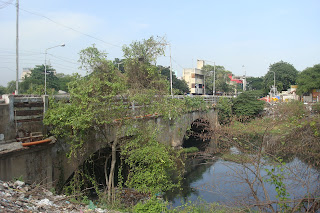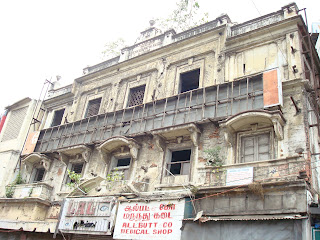Considering its positioning, so near Mount Road, the Chintadripet MRTS station should have been buzzing with people. The planners also had such visions in mind when the station was opened in 1995; it has quite a bit of parking space, as well as many options for commercial space within the station building. But, as it has happened with most of the MRTS' stations, the "build it and they will come" approach did not pan out exactly the way it was forecast. The network itself has suffered from poor interconnectivity and has not been well patronised.
With the Chennai Metro also coming up, it is hoped that the MRTS will also get a boost; Chintadripet is one of the MRTS stations that is quite close to the Metro and it could become an interchange point. If that were to happen, a lot more people can look up at this mural on the station facade with a smile!





























